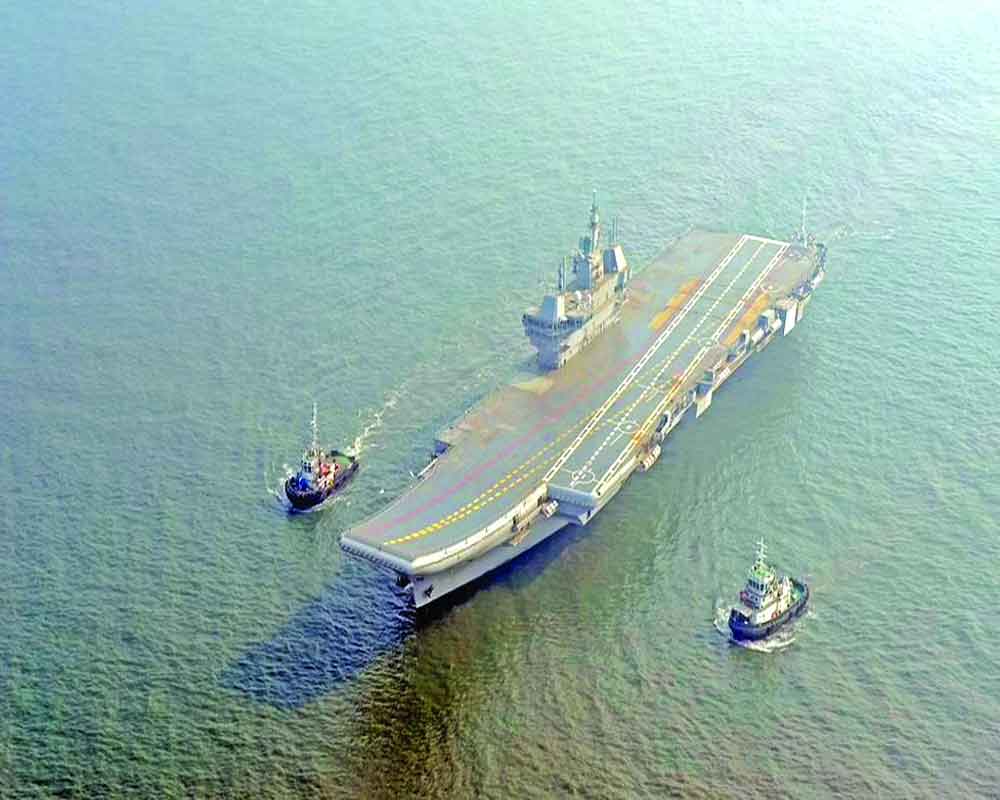India's first indigenous aircraft carrier highlights its technical knowhow and manufacturing capabilities
With the Indian Navy on Thursday taking delivery of the first indigenous aircraft carrier (IAC) Vikrant from the public sector Cochin Shipyard Limited (CSL), Kochi, the country's defence capability just went a notch up. "The ship has undergone all the mandatory trials and is likely to be commissioned into service by Prime Minister Narendra Modi next month," a Pioneer report said. Designed by the Indian Navy's Directorate of Naval Design and built by CSL, the IAC came at a cost of about Rs 20,000 crore.
As a tryst with tradition, she has been named after her valiant predecessor, which by the way was our first aircraft carrier and played a critical role in the 1971 India-Pakistan war. She had blockaded what is now Bangladesh. "The 262-meter-long carrier weighs 45,000 tonnes which is much larger and more advanced than her predecessor. The ship is powered by four gas turbines totaling 88 MW power and has a maximum speed of 28 knots," the report said. Vikrant has the indigenous content of 76 percent; she is truly a testimony to the success of Aatmanirbhar Bharat. The making of Vikrant was the result of a public-private partnership; along with CSL, public sector Bharat Electronics Limited and Bharat Heavy Electricals Limited, and private companies like Kirloskar and Larsen & Toubro were involved in its manufacture.
Army chief General Manoj Pande on Thursday highlighted this fact. Speaking at a conference jointly organized by the Federation of Indian Chambers of Commerce & Industry (Ficci) and the Centre for Joint Warfare Studies, he said that "we have moved from a relationship of buyer-seller to co-development and co-production [of weapons and systems] with our foreign partners." Our interests are best served by being Atmanirbhar, especially in defence production, he said, adding that self-reliance is one of the key factors on which the military capability of any nation rests. IAC Vikrant underlines not just the country's technical know-how but also its manufacturing capabilities. There is no dearth of scientists, engineers, and other technologists in India; there are also a large number of research institutions-doing fundamental, industrial, and defence research. India is also home to innumerable business tycoons and spirited entrepreneurs; even the most socialistic rules and regulations during the pre-1991 dark ages didn't suppress them fully.
They have shown their mettle in the success of IAC Vikrant and other defence projects involving manufacturing. There is no reason that they cannot boost manufacturing in general in the country and thus reduce our dependence on imports. Just as the Modi regime has striven in the past to make the ecosystem for the greater participation of the private sector in defence production, it can also do the same to ensure that industrial growth gets a big spurt. The need of the hour is greater interaction with the representatives of industry and a responsive attitude toward government at all levels-Central, state, and local. IAC Vikrant is good news; it can be made better.


























